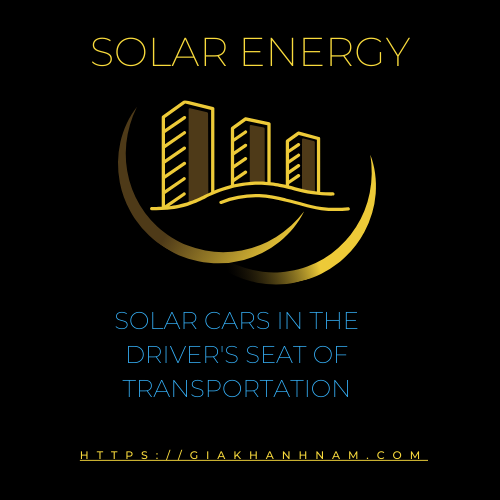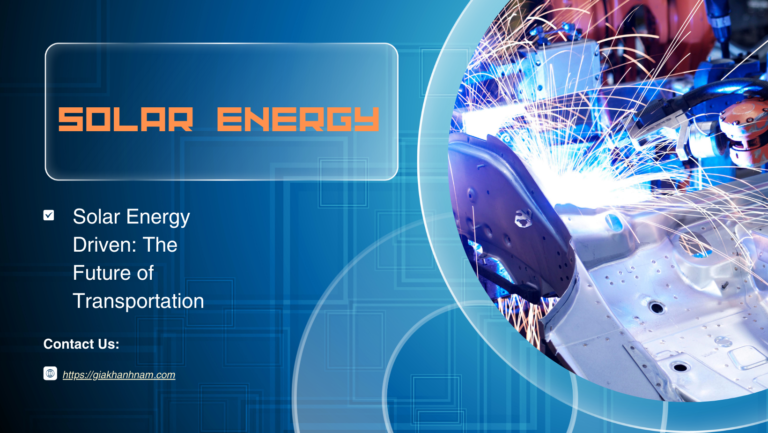As the world increasingly turns its attention to sustainable living and green technology, the transportation sector stands at the forefront of a significant transformation. Solar-powered transportation, once a concept belonging to the realms of science fiction, is now rapidly becoming a tangible reality, promising a cleaner, greener future for our planet. This article explores the exciting shift towards solar energy in transportation, highlighting its potential impacts, technological advancements, and the challenges that lie ahead.
The global push towards sustainability has ignited interest in renewable energy sources, with solar power leading the charge. The transportation sector, a major contributor to global carbon emissions, is undergoing a green revolution, with solar energy playing a pivotal role. From solar-powered cars and buses to trains and even planes, the integration of solar technology into various modes of transport is set to redefine our approach to mobility.
Solar-powered transportation offers numerous benefits, both environmental and economic. By harnessing the power of the sun, these vehicles produce zero emissions, significantly reducing pollution and contributing to cleaner air quality. Furthermore, solar energy, being abundant and free, promises to lower operational costs, providing a cost-effective alternative to fossil fuels. This shift not only aligns with global sustainability goals but also offers a promising solution to the pressing issue of climate change.
Technological advancements are the driving force behind the rise of solar transportation. Innovations in photovoltaic (PV) technology have led to more efficient and durable solar panels, capable of converting sunlight into electricity more effectively. Battery technology has also seen significant improvements, with newer models offering higher energy storage capacity and longer life spans. These advancements are crucial for the development of solar-powered vehicles, enabling them to travel longer distances and operate more reliably.
Despite the promising outlook, the transition to solar-powered transportation is not without its challenges. One of the main obstacles is the initial cost of solar technology, which remains higher than traditional energy sources. However, as production scales and technology advances, these costs are expected to decrease, making solar transportation more accessible. Another challenge is the need for infrastructure development, such as solar charging stations, to support these vehicles.
The future of solar transportation is bright, with ongoing research and development efforts focused on overcoming existing barriers. Governments and private entities worldwide are investing in solar projects, recognizing the potential of this technology to transform the transportation sector. Initiatives to promote solar-powered vehicles, including incentives and subsidies, are also gaining traction, further accelerating the shift towards green transportation.
The path forward for solar-powered transportation involves not just technological innovation but also a collective shift in societal attitudes and government policies. Public awareness and acceptance are crucial in driving the demand for solar vehicles. As consumers become more environmentally conscious, their choices can significantly influence the market, encouraging manufacturers to invest in green technologies. Educational campaigns and hands-on experiences, such as test drives and exhibitions, can play a pivotal role in changing perceptions and demonstrating the viability and benefits of solar-powered transport.
Moreover, government policies and regulations are key to accelerating the adoption of solar transportation. Incentives for buyers of solar-powered vehicles, subsidies for renewable energy projects, and investments in research and development can stimulate the market. Additionally, setting ambitious but achievable emissions targets can compel the automotive industry to innovate and adopt cleaner technologies. Infrastructure development, such as the construction of solar charging stations, needs to be a priority, supported by both public and private investments.
The integration of solar transportation with smart cities and grids presents another exciting opportunity. Solar vehicles can act as mobile energy sources, contributing excess power back to the grid and helping to balance supply and demand. This concept, known as vehicle-to-grid (V2G) technology, not only enhances the efficiency of the energy system but also offers a potential revenue stream for vehicle owners. Smart city infrastructure can further support solar transportation by optimizing routes, managing traffic, and ensuring the efficient use of energy resources.
Collaboration across sectors and borders is essential to realize the full potential of solar-powered transportation. Partnerships between governments, industry, academia, and non-governmental organizations can foster innovation, share knowledge, and scale up successful models. International cooperation can also play a vital role, as climate change is a global challenge that requires a coordinated response. By working together, we can leverage the power of solar energy to make sustainable transportation a reality worldwide.
The transition to solar-powered transportation is more than a technological shift; it is a comprehensive movement towards a more sustainable and environmentally friendly future. While the road ahead may have its challenges, the collective efforts of individuals, businesses, and governments can pave the way for a cleaner, greener world. The future is indeed solar, and by embracing this renewable energy source, transportation can go green, reducing our environmental footprint and safeguarding the planet for future generations. The journey towards solar-powered mobility is not just a possibility; it is an imperative, and with continued innovation and collaboration, it will become the cornerstone of global transportation systems.




















+ There are no comments
Add yours